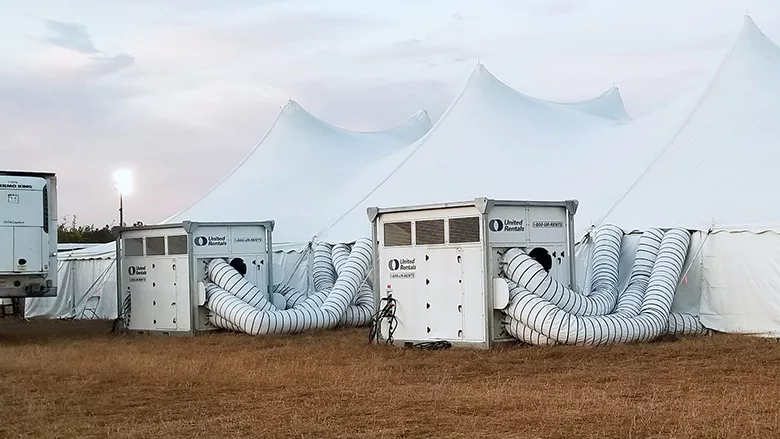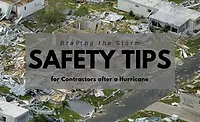What to Consider for Restoration after a Hurricane

Photo credit: United Rentals.
In terms of weather disasters, post-hurricane flooding can be one of the most severe, disrupting lives and livelihoods. To mitigate loss, a quick response to flooding is critical and planning for restoration of a jobsite, facility or business could make a huge impact. The plan should also include how and when to acquire water pumps and other storm clean-up equipment.
Pump Rental: What to Consider
Flooding can be caused by a natural disaster like a hurricane or something like a burst pipe. Regardless of the source, you’ll need an emergency water pump to remove excess fluid.
High-volume pumps are great for moving water a short distance without a significant change in elevation. For minor flooding, vacuum-assisted, trailer-mounted centrifugal pumps with 4-inch suction and discharge openings can remove 1,200 gallons per minute (GPM). For more severe flooding, larger models would be more beneficial. Both options run on diesel, so there is no need to source a generator.
If dewatering your site requires pumping over long distances or elevation changes, a high-head pump is a good option because it produces more pressure and pushes water up higher. Similarly to high-volume pumps, the size of the suction and discharge openings will dictate the water removal rate.
For areas with deep water, like ditches or basements, a submersible pump can help. These units are designed to be completely submerged, pushing water up and away instead of pulling it to discharge.
Removing small amounts of water with contaminates such as stones, leaves, or mud is easiest with a trash pump, which can pass solids that may clog other types of pumps.
Emergency Hvac Equipment: What to Consider
Interior flood restoration must move quickly to avoid secondary damage such as cracking wood or mold caused by humidity and other airborne pollutants.
Removing moisture is essential to help prevent mildew and mold growth. Units range from compact, which can remove up to 15 gallons of water per day, to industrial models that can remove up to 400 gallons of water daily.
Air scrubbers are portable filtration systems that can remove airborne particles, including mold spores, and improve interior air quality.
If the storm leaves the jobsite without power, teams may need generators to power flood restoration equipment and temporary lighting. Inventory may be scarce after a major storm, so partnering with a provider with a large footprint and the ability to mobilize resources is essential.
Safety Considerations
Workers performing hurricane clean-up should consider appropriate PPE (personal protective equipment), including long sleeves and pants to protect against scrapes, insect bites and sun exposure. Workers should also consider steel-toed boots and heavy-duty gloves.
Before beginning work, consider an initial assessment of the site and surroundings. Start with a visual inspection, looking for floodwater, debris, broken glass or downed wires. Check for structural integrity, including sagging floors or ceilings. Workers should refrain from entering structures with visible damage until adequately inspected.
Also, hurricane damage can expose asbestos fibers, which may require additional PPE and removal process but a licensed asbestos abatement professional.
Lean on sense of smell, which can alert crews to a gas leak or mold. Prioritize ventilation: both immediate and during recovery, proper ventilation is key.
Hurricane clean-up is critical, and there are many components to consider. Partner with the right vendors and always consult with professionals for proper use of equipment based on project and situation.
Looking for a reprint of this article?
From high-res PDFs to custom plaques, order your copy today!









